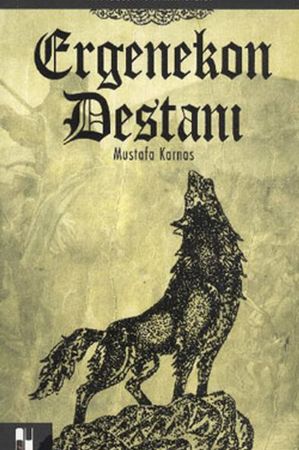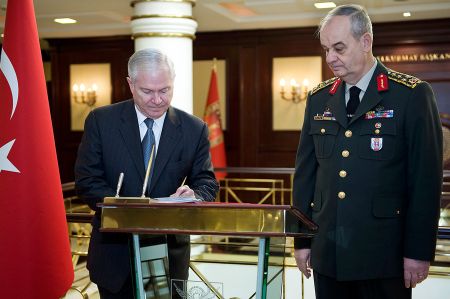Ergenekon – Myth, Truth or Just Scaremongering?
- Written by Portal Editor
Especially in the last few years, the term Ergenekon can be read again and again in the daily press reports, mostly accompanied by a wave of arrests of politicians, journalists or lawyers and officers and trials against public figures; the television news even mentions conspiracy theories and state attacks.
Even in the European press, many events surrounding Ergenekon's activities in the ranks of migrants are described as right-wing, integration-inhibiting forms of organization, which are sometimes observed by organs of the Office for the Protection of the Constitution.
There is still a strong right-wing movement in Turkey, as well as in countries with a large proportion of originally Turkish guest workers and migrants, who see the pillars of their right-wing ideologies in the legends of the Ergenekon saga and also represent them externally. The legends about Ergenekon, which have meanwhile fallen into oblivion, are again increasingly used as a parable from the past to the current stage of development of Turkey, seen from a global political point of view. With the collapse of the ancient empire and the flight of the Göktürks in late antiquity or in the Middle Ages to the Ergenekon Valley, the collapse of the Ottoman Empire and the emergence of the young Republic of Turkey are often compared and, what is more likely, by the supporters of right-wing sentiments the reasons and causes of the collapse are seen abroad or among the non-Turkish peoples.
Voluntary isolation of the Göktürks in the mountain valley of Ergenekon
 A look at history alone clearly shows how "unworldly" this view is in principle, because it was common among the Göktürks in particular to mix with non-Turkish tribes in order to strengthen their tribal membership and loyalty to the tribal chief in the world view of the nomadic people on horseback. In many minds, the flight of the Göktürks to the Ergenekon valley was synonymous with entry into a "paradise" that was intended to strengthen and revitalize their own people as preparation and regeneration for new power in the political circle of the peoples. If it was the voluntary isolation of the Göktürks in the mountain valley of Ergenekon, which was surrounded on all sides, it was the political isolation of the young Turkish republic in its founding phase in the 1930s.
A look at history alone clearly shows how "unworldly" this view is in principle, because it was common among the Göktürks in particular to mix with non-Turkish tribes in order to strengthen their tribal membership and loyalty to the tribal chief in the world view of the nomadic people on horseback. In many minds, the flight of the Göktürks to the Ergenekon valley was synonymous with entry into a "paradise" that was intended to strengthen and revitalize their own people as preparation and regeneration for new power in the political circle of the peoples. If it was the voluntary isolation of the Göktürks in the mountain valley of Ergenekon, which was surrounded on all sides, it was the political isolation of the young Turkish republic in its founding phase in the 1930s.
The aim of the voluntary isolation as well as the political restraint was, both in the distant past and in the last century, to gain new strength and energy for the flourishing of a new Great Turkish Empire that should include all Turkish tribes in Central Asia. At least that is the dream of the right-wing, nationalist Turkish forces in the world. The gray wolf Asena and the Ergenekon are the popular motifs that are used again in the right-wing, nationalistic currents, even in art and music. This body of thought appears again and again in Kemalist circles with the aim of achieving a unification of all Turkish ethnic groups. The declared goal of the Gray Wolves is the founding of a nation of all Turkic peoples, stretching from the Balkans through Central Asia to the autonomous Chinese region of Xinjiang. According to their ideas, a strong, independent and self-confident Turkey should be at the center of this process, known as Pan-Turkism.
However, one of the problems of the modern Turkish population lies precisely in assigning blame to others, borrowed from history, to which the still partially inadequate education and confrontation with one's own history contributes greatly.
Turkish-Kurdish law student Seyran Ateş
When Mehmet Ali Ağca assassinated Pope John Paul II in 1981, there was a chance to delve into the story because he was a member of the Gray Wolves. In Europe, too, there were assassinations and actions that indicated the immense potential for right-wing violence in Turkey. The assassination attempt on the then little-known Turkish-Kurdish law student Seyran Ateş, which was carried out in the TIO women’s shop in Berlin-Kreuzberg in 1984, was mentioned later fierce political discussions, in which the now well-known author of many books was critically injured.
Today, Ergenekon is the eponym in parlance to refer to an underground network that is said to have prepared an overthrow of the currently ruling party. Countless was the number of journalists and officers arrested who are said to have been involved in the planned plot. court cases are ongoing.
Please read as well:
